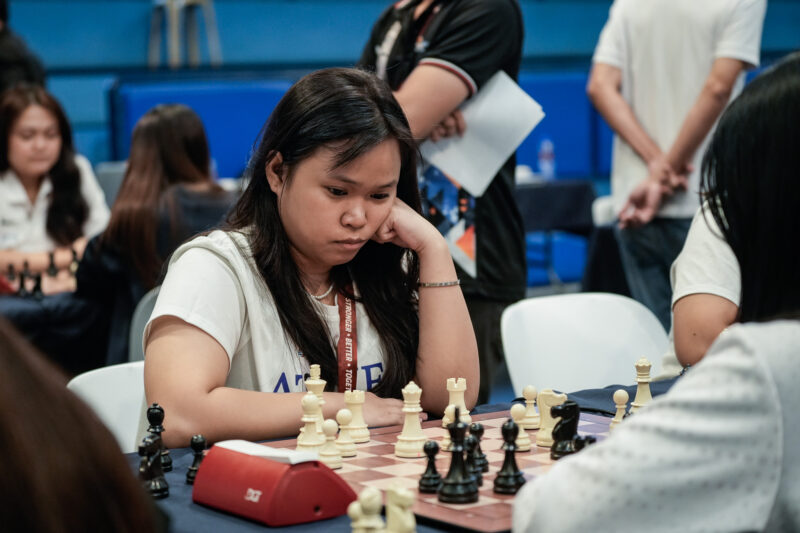AS FAR as education is concerned, the country is being left behind. The Harvard Project for Asian and International Relations (HPAIR) and Ramon Magsaysay Awards Foundation (RMAF) Asian Leadership Forum last August 27 stressed this reality, and proposed that striving for excellence as a nation can be the solution.
The forum featured the 2010 Ramon Magsaysay Awardees for Environmental Science Christopher Bernido and wife Ma. Victoria Carpio-Bernido.
Their speeches tackled the country’s poor quality of education, and urged everyone in attendance to challenge themselves and meet the global standards of excellence.
“The challenge [for us Filipinos] has always been to come up with all encompassing and comprehensive solutions to problems despite having minimal resources,” said Bernido.
HPAIR is an organization founded by Harvard professors and students to promote discourse on critical issues affecting the Asia region and its relations with the world.
Likewise, RMAF is a 52-year entity known for its mission of honoring individuals and organizations who expend time and effort “serving the people of Asia with remarkable resolve and conviction”.
The forum was held at the School of Management’s Ching Tan Room.
“Learning as one Nation”
In the short presentation, entitled “Learning as One Nation”, given out by Bernido, he illustrated the country’s current education crisis.
Bernido pointed out notable signifiers of the country’s said crisis. One is the lack of Doctor of Philosophy (Ph.D) degrees in Science and Engineering.
He said that the basis for technological innovations is Science, adding that technology can change over time but Science remains. With the lack of Ph.Ds in the said fields, this puts the Philippines at a disadvantage.
The United Nations Educational, Scientific and Cultural Organization’s benchmark for the number of Science and Engineering Ph.Ds is 340, but the Philippines only has 157.
Another signifier is the absence of a mass of well-trained and highly creative people in the country.
Bernido thus stated that a collective development regarding education must be started. “We have a nationwide distribution of talents, not just Metro Manila alone. We have to start developing as a nation,” he said.
More efficiency, not more years
When the forum’s floor was opened for questions, one of the ear-catching queries was on the proposed 12-year educational cycle of President Aquino.
The Bernido couple agreed that the crisis on basic education should be addressed but made it clear that extending the cycle is an archaic solution.
“We are in the 21st century already and extending the years of education is a solution used back in ancient times. Let us fix the problems of the 10-year cycle first. Moving from a 10-year cycle to a 12-year cycle would only mean more spending,” said Bernido.
Several students in attendance shared the same sentiment with Bernido and identified the lack of motivation and willingness to compete as reasons why the Filipino student falls behind in academics and international competitions.
“There is a lack of motivation and willingness to learn on the part of students. Also, maybe the concentration of learning should deal more with specifics, like agriculture, manpower skills and not just theoretical lessons,” said freshman Dia Cembrano.
HPAIR Research and Training Director Mon Mercado said that apathy also plays a part in the problem.
“In the Philippines we lack that fear of losing our future job opportunities to other people except to other Filipinos; that is why we don’t feel the effect of globalization that intently when it comes to job opportunities,” Mercado said.
“We must instill in the students that sense of competitiveness that the modern world demands from each one of us, in order to generally perform at par with the rest of developing Asia,” Mercado added.







Construction is the construction of all types of buildings and structures. Buildings are made by a general benign activity. Construction is both a knowledge of erection techniques, as well as common-sense skills. The pre-eminent reprove of construction is the construction of modern buildings, as well as modernization, remodeling, renovation, inflation of existing buildings. In the construction mead, use unusual technologies, which tabulate choosing of materials, machinery and outfit, technological and financial conditions and controls on construction. Buildings can be erected using concrete, wood and metal. On the series of techniques and materials is influenced during sundry factors such as the utilize of the erection, its value, out of sorts conditions, financial resources, position, alcohol preferences. The system of structure is a sheer urgent applicants of engineering sciences. Without an satisfactory and safe structure society could not function. The buildings comprise an foremost ritual, provide security, jobs, instruction and profuse others.
Regards Luke
Architekture in my style